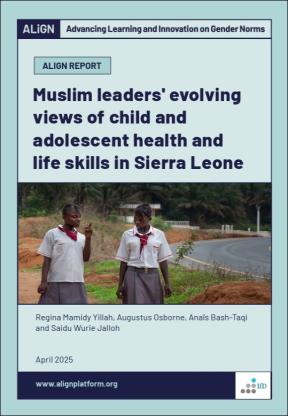- Journal article
- 27 Agosto 2019
The influence of schooling on the stability and mutability of gender attitudes: Findings from a longitudinal study of adolescent girls in Zambia
- Published by: Journal of adolescent health

ABSTRACT
Purpose: Inequitable gender norms are thought to harm lifelong health and well-being. We explore the process of gender attitude change and the role of schooling in shifting or reinforcing gender norms among adolescent girls in Zambia.
Methods: We used longitudinal data collected from unmarried, vulnerable girls (aged 10-19 years) as part of the Adolescent Girls Empowerment Program. We conducted random effects multinomial logistic regression to determine whether schooling-related factors were associated with shifts in adolescent girls’ gender attitudes across three survey rounds and explored whether these relationships varied by age.
Results: Mean gender attitude scores at the aggregate level remained stable over time among rural girls and improved slightly for urban girls. At the individual level, about half the girls had relatively unchanged scores, whereas the other half shifted to higher or lower scores between rounds. Rural and urban girls currently attending school were more likely to have relatively stable equitable attitudes than stable, inequitable attitudes, or attitudes that shifted to inequitable. Educational attainment was not associated with shifts in gender attitudes among rural girls. Urban girls with higher educational attainment were more likely to have relatively stable equitable attitudes than stable, inequitable attitudes, or attitudes that shifted to inequitable or more equitable.
Conclusions: Patterns of gender attitude stability and change differed more for urban girls than rural girls and varied by age and schooling-related factors. In general, schooling appears to be an institutional lever that holds promise for shifting gender attitudes toward greater equality. Our study highlights the importance of looking longitudinally at the effects of social context and reinforces calls for targeted, context-specific interventions for this age group.
- Tags:
- Education, Gender-based violence
- Countries / Regions:
- Zambia
Related resources
Blog
14 Abril 2025

Report
14 Abril 2025

Report
26 Marzo 2025
